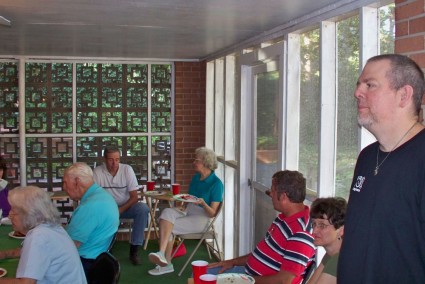Twenty-five years ago tomorrow turns out to have been a pretty major turning point for me. It was the day I resigned as General Manager of the student radio station at UNCG. In itself, this wasn’t a big deal, just the inevitable result of my having taken a position I never wanted in the first place. But it launched a chain of events that led to my dropping out of college, which was the start of a period I later referred to as the “dark years,” which included eighteen very drunken months in Greensboro, three more in Myrtle Beach, and most of my first residence in Charlotte.
Actually, resigning from the station wasn’t so much the beginning of my troubles, but the beginning of the series of events that signaled I’d let these troubles take over my life. It had been a really bad year all the way around. I had boy troubles, I’d sort of let myself get talked out of transferring to Chapel Hill for the fall semester. And I really wasn’t sure what the hell I wanted to do next. About the only things I was certain of were that I didn’t want to live in Greensboro anymore (interestingly, I’d taken my first trip to New York a couple of weeks before) and that I wasn’t going to finish the semester at UNCG.
I don’t think I’ve ever been quite as miserable as I was during the fall and winter of 1984-85, although junior high (all of it) came pretty close. In fact, I think I was pretty perpetually miserable for the next three or four years, although I was too drunk to notice most of the time. Maybe “miserable” is the wrong word; I did manage to enjoy myself from time to time. In fact, all I really wanted to do was have a good time. But whenever I took the time to think seriously about my life, I realized I didn’t have much of one, and it got me really depressed.
That’s not to say that everything was all peaches and cream after I arose from my little fog, moved back to Greensboro, and went back to school in 1989, nor that everything was perfect during the San Francisco years. In fact, I was quite directionless for a very long time. Nor was I any less intoxicated for most of that time. But maybe age gave me the perspective to realize that things would ultimately get better. Or maybe I just “flattened out” emotionally, sort of like a lobotomy patient. I can definitely say that I’ve very actively avoided anything resembling drama in subsequent years.
It took me a long time to recover from 1984, or at least from some of the decisions I made that year. In fact, I’m still in the process of recovering from some of them. Ultimately, though, these decisions and experiences, good and bad, have led me to where I am today. My life isn’t perfect, but I generally like it, and had I not followed the path I did, there’s no telling where I might have ended up. Since I can’t really change the past and I’m not certain that I would even if I could, I’m not really sure what this babbling is all about. But that’s what I’m thinking about this Sunday night. If I come up with anything more concrete, I’ll let you know.



